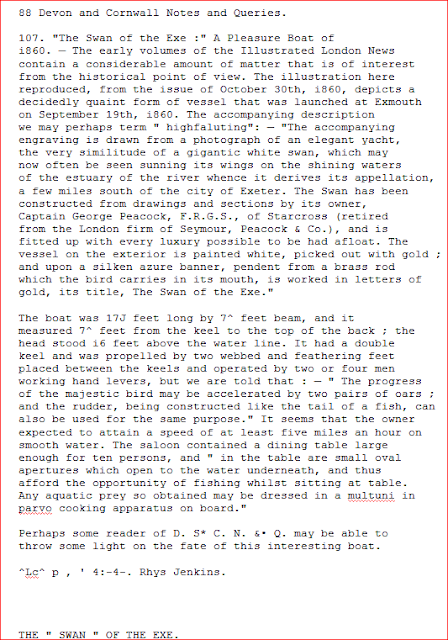The Tourist Information Centre referred them to Starcross Parish Council
Starcross Parish Council referred them to Starcross History
Starcross History posted their enquiry on Starcross News on Facebook
and the rest, as they say, is history
"We are trying to trace a farm in or near Starcross which we used to visit annually very many years ago. We don't know the name of the farm, but the owner/tenant farmer was NICHOL(L)S. Period: 1930 - 1943.
Any information you can give will be gratefully received."
The enquirer then said that the farm was definitely towards Dawlish, rather than towards Exeter.
This message was also posted on Starcross News on Facebook. and there's been a reply already, which states that there was a Nicholls who farmed near Dawlish Warren, and gives his forenames.
"Ive found records relating to a Mr William Hudson Nicholls from Eastdon Farm. Sound familiar?"
Here's a picture of Eastdon Farm, from geograph. Copyright Nigel Chadwick. This photograph has been made available to all under a Creative Commons Licence
| http://www.yourlocalweb.co.uk/devon/eastdon/pictures/popup-1250442-eastdon-farm/ |
Could this be the farm they seek?
Here's more information about the Nicholls farming family:
Nicholls
certificates
Marriage
25 November 1916 at Register Office, Newton Abbot, by licence before registrars
Will E
Horner
(Registrar), F Horner (Superintendent Registrar)
William
Hudson Nicholls, aged 29, bachelor, farmer, Eastdon Farm, Dawlish West, father
John
Jeffry
Nicholls, farmer
Mabel
Lena Holbrook, aged 22, spinster, 17 Abbotsbury Road, Newton Abbot, father George
Holbrook
(deceased), accountant
Solemnised
between us: William Hudson Nicholls, Mabel Lena Holbrook
Witnesses:
Violet A Nicholls, Leslie J Bassett
Birth 2
January 1928 at Eastdon Farm, Dawlish West
Lena Ann
Nicholls, daughter of William Hudson Nicholls, farmer, and Mabel Lena Nicholls
formerly
Holbrook,
Informed
by W H Nicholls, Eastdon Farm, farmer, on 16 February 1928
Registrar
William John Male
HERE'S 's the poignant story, from the Dawlish Local History Group, of the death of the farmer's son, John Jeffery Nicholls, on 12th October 1918. Private Nicholls was 9 days short of his 27th birthday. It was one month from the end of the war.
More information from Starcross News on Facebook
Dawlish Warren farmer Richard Weeks has more information about the Eastdon farming family. Could it be the right farm?
Here's some more info from the enquirers
"I wonder. Would Eastdon Farm have been part of what is now the Eastdon Estate, which mentions woods and private paths to the beach at Dawlish Warren? We remember walking through the warren (complete with rabbit droppings!) and a tunnel, which led to the beach; given our ages, I don't think it could have been a very long walk. "
and more about the Nicholl family at The Warren
"I believe farmer Nicholls used to farm the marsh land at Dawlish warren after the Second World War. during the summer he had a very basic campsite I imagine this is were your people would have stayed. The marsh land is now hazel wood park and various other holiday camps on that area."












